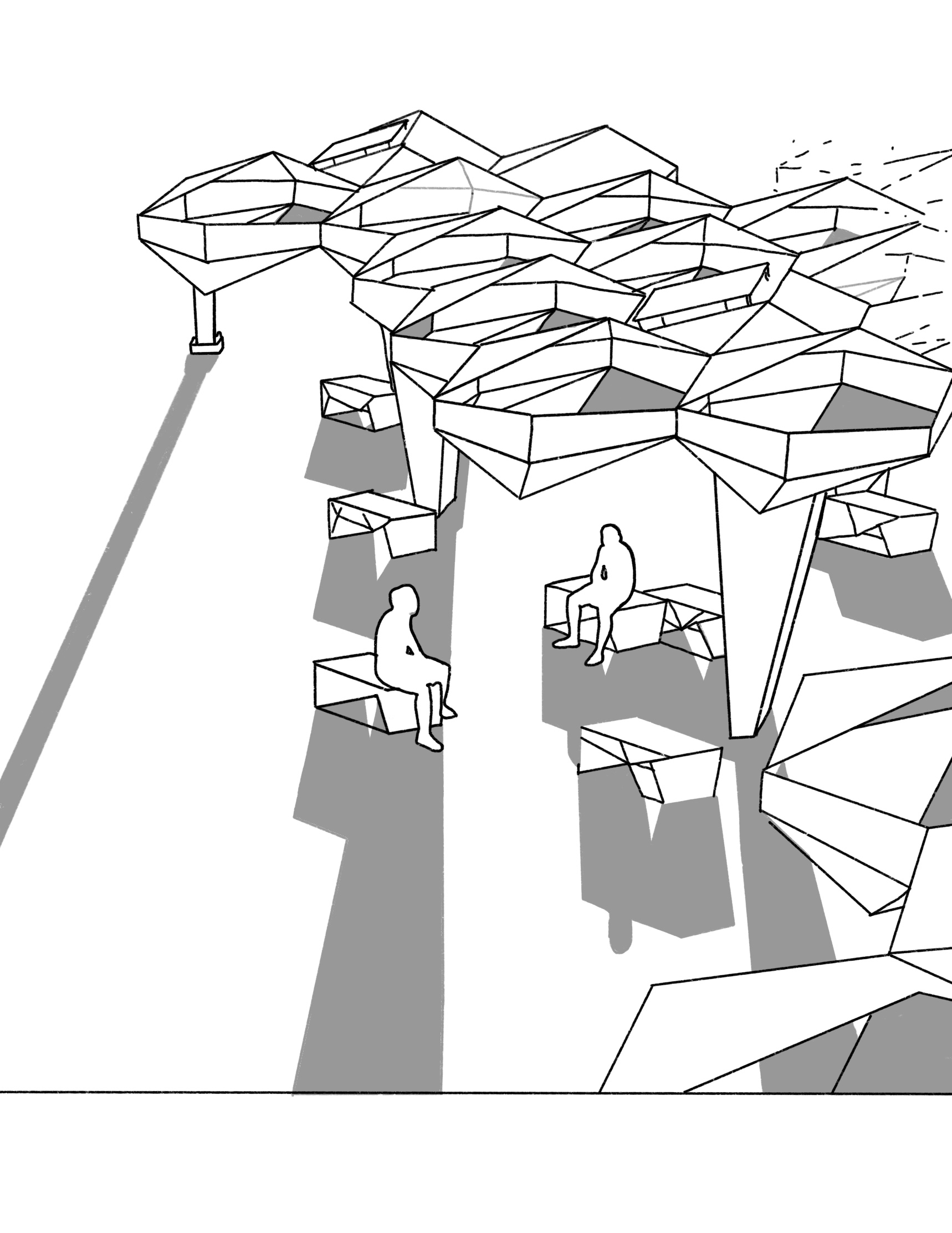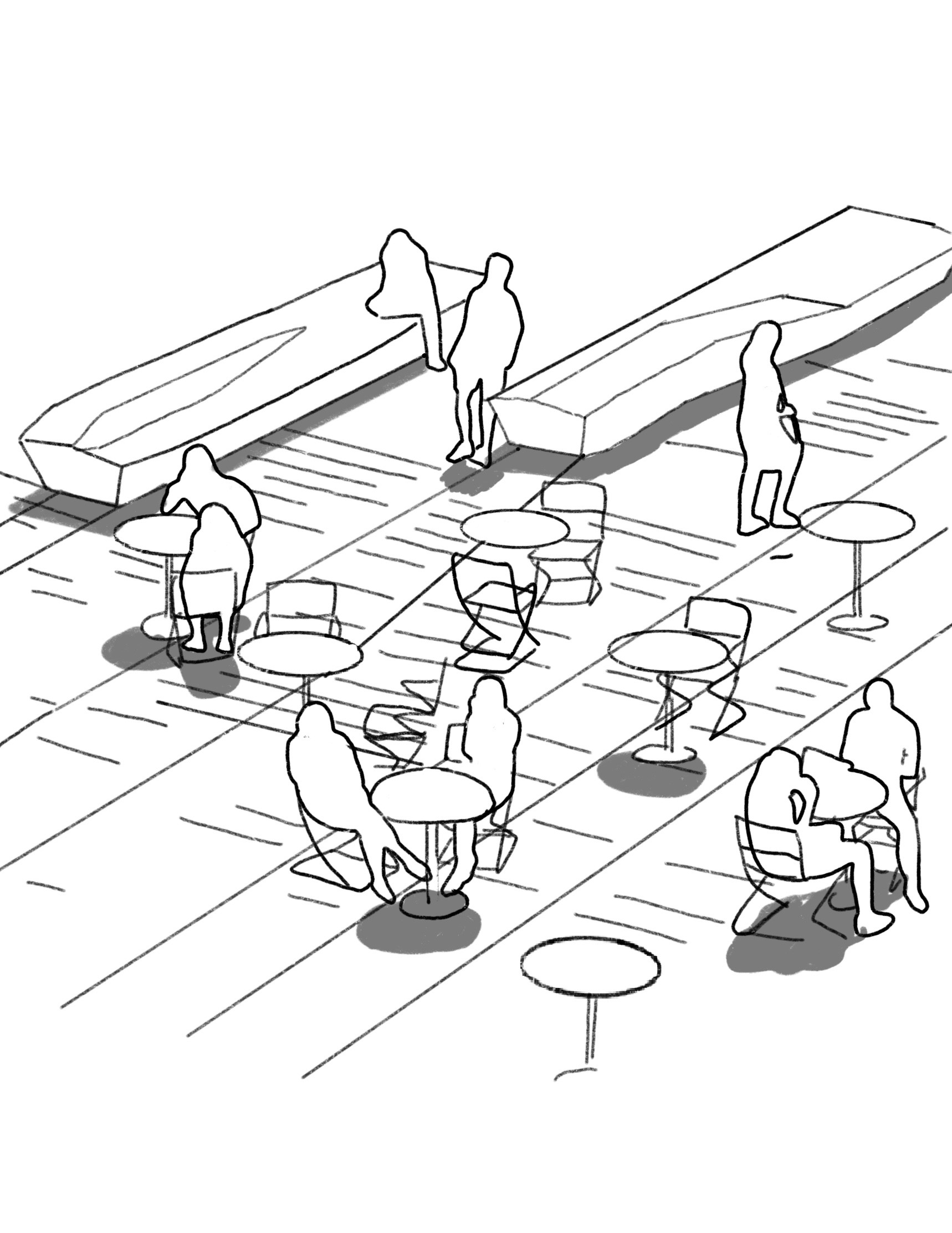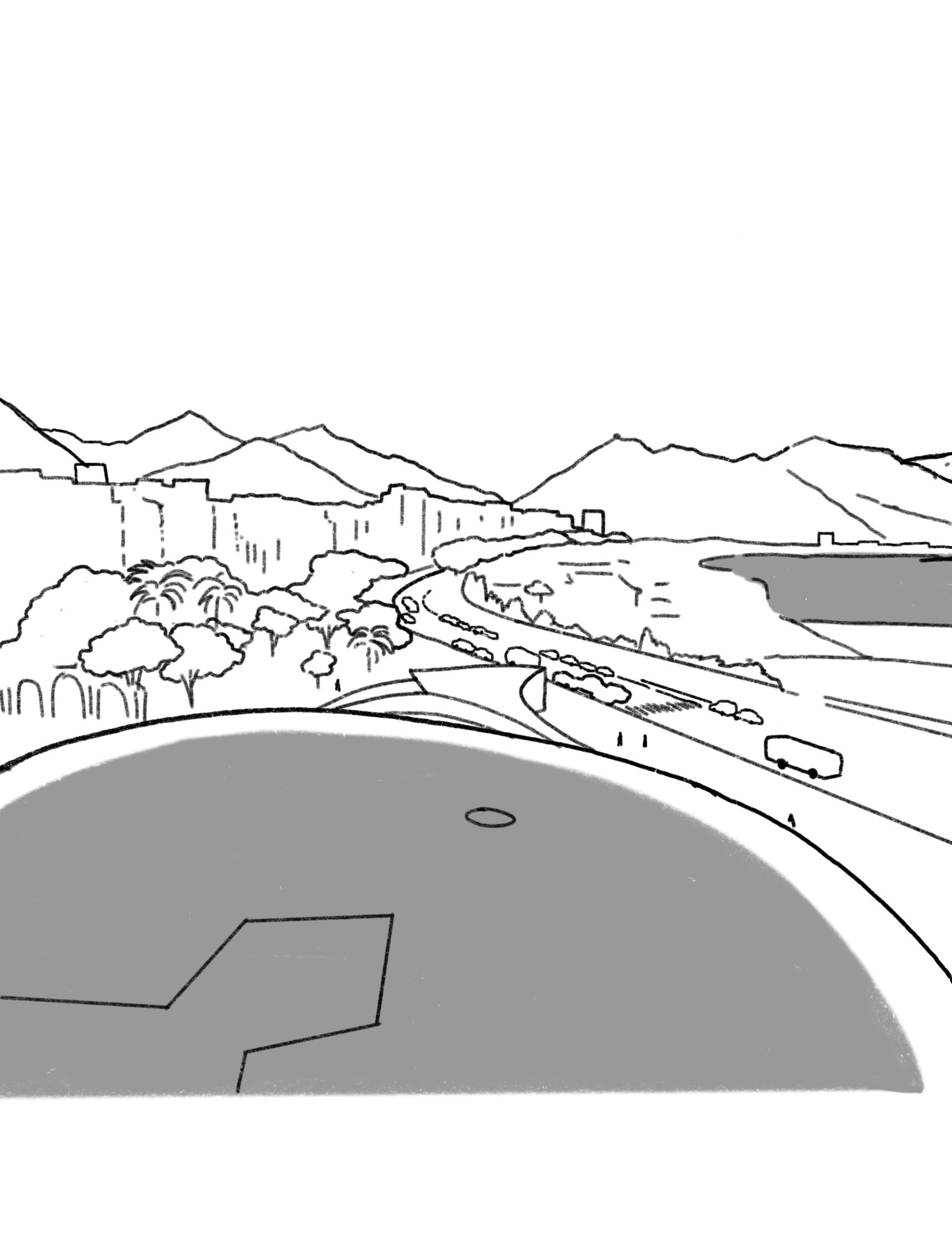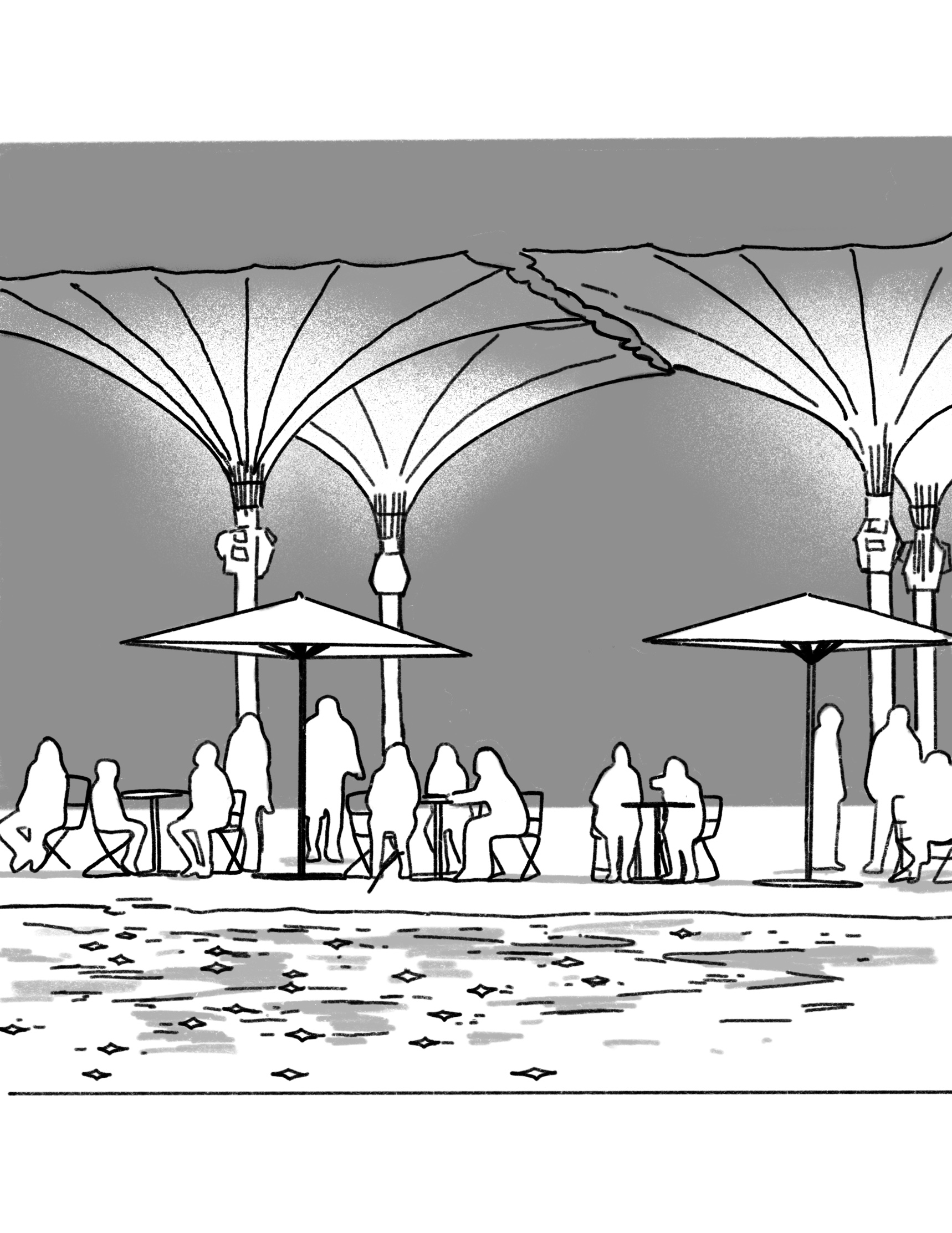Strategy
Adaptation
Limit Exposure to Excess Heat
As more people are exposed to hotter temperatures around the world, carefully selected surfaces and materials can help keep sites cool. Materials can be selected for heat absorption, conduction, and retention properties, as well as their albedo-reflectivity measurements.
Move activities away from high-risk areas (hottest, most exposed, most populous)
Options
Case Study
For Sanshan Hillside Park in southern China, where mid-summer heatwaves can bring sweltering temperatures and high humidity, SWA took advantage of a well shaded part of the site by clustering active recreation elements like basketball courts, children’s play areas, and adult exercise equipment underneath an elevated section of the 6-lane highway that cuts through the park.

Create obstacles to surface warming
Options
...with large canopy shade trees over hardscape and streets.
...by shading dark pavements with more reflective shade structures.
Case Study
Shadow Play, Höweler + Yoon’s sculptural shade structures, are made from folded steel cells, which filter the sunlight, casting shadows and reducing temperatures below. The geometry of the canopy maximizes shade while allowing for breezes and air movement to penetrate.

Reduce excess heat by lowering surface temperatures
Options
...with permeable paving in areas of regular rainfall.
...with a green roof.
...with high-albedo and reflective surface materials (cool roofs, pavements).
...with green parking lots (Grasscrete).
Case Study
As part of Stoss Landscape Urbanism’s update of a 2-acre public plaza at Harvard University, the design team replaced a series of asphalt walkways with light-colored, high-albedo pavers in order to limit thermal gain throughout the site. Light-colored wood was selected for the sculptural seating elements, which stay cool to the touch even in the summer sun.

Increase evaporative cooling
Options
...with planting and irrigating high transpiration trees that were regionally appropriate (for example, Platanus hybrida, Ficus microcarpa, Gleditsia triacanthos, and Platanus racemosa in Los Angeles).
...with a large surface area water feature (can include anything with constant water on the surface like skims, splash pads, stream daylighting, pond, retention basin, rainwater storage, canals, etc.).
Case Study
Located fewer than 200 miles off the coast of Western Sahara, where late summer heatwaves can bring temperatures well above 90 degrees Fahrenheit, Herzog & de Meuron’s design for Plaza de España includes a 250 ft diameter water feature. The feature helps lower air temperature throughout the plaza through evaporative cooling.

Design for night time use
Options
...with play equipment that doubles as adult workout equipment or vice versa.
...with small, partially open structures for individuals or pairs.
...with low-lumen, even coverage lighting that avoids hot spots.
...with group program areas that include adjacent areas for lingering post-event.
Case Study
Sundance Square Plaza was designed by Michael Vergason Landscape Architects to serve as a central gathering place for downtown Fort Worth. In the evening, the plaza’s water features are illuminated and color changing lights accent four monumental retractable umbrellas that double as glowing beacons.
